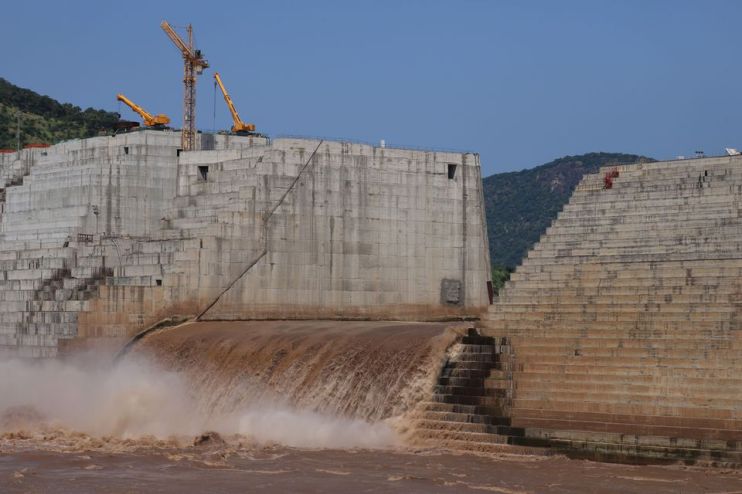Ethiopia starts producing electricity from Africa’s biggest hydropower plant

Ethiopia has started producing electricity at its controversial hydropower plant on the River Nile.
The Grand Ethiopian Renaissance Dam, which is located in the Benishangul-Gumuz region, will become the biggest hydropower plant in Africa when fully operational.
So far, the government invested more than 100bn Ethiopian birr ($1.98bn) in the project – which could cost up to $5bn (£3.7bn) following its completion.
It will generate approximately 5,150 MW of electricity, some of which will be exported to neighbouring nations such as Sudan and Egypt.
Both countries are worried however, that the project will cause water shortages downstream.
Talks between the three countries broke down last summer, and the UN Security Council has since urged them to resume talks over the dam’s operation.
Nevertheless, Ethiopia’s government have consistently outlined the country’s need for the dam.
Ethiopia is the second most populous country in Africa, and also has the second biggest electricity deficit, according to the World Bank.
Currently, around two thirds of the country’s 110m population are lacking a connection to the country’s grid.
Prime Minister Abiy Ahmed flicked a digital switch today to turn on the turbines in the first phase of the project.
He said: “Ethiopia’s main interest is to bring light to 60 per cent of the population who is suffering in darkness, to save the labour of our mothers who are carrying wood on their backs in order to get energy.”
Meawhile, Ethiopia’s parliament voted last week for an early end to a six-month state of emergency, effective immediately.
This adds to signs that a bloody conflict between the government and rebellious Tigrayan forces could be easing.